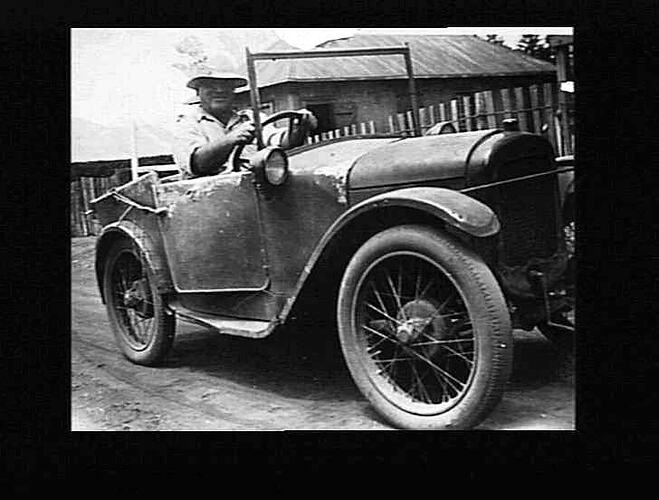The Austin Seven was designed by Sir Herbert Austin (later Lord Austin of Longbridge) and became the first commercially successful mass-produced small car. Austin had first established himself as a young immigrant engineer during the 1880s in Melbourne, Australia when he served an apprenticeship at Langlands Foundry and worked for several local firms including the Wolseley Sheep Shearing Machine Company Ltd. He returned to the UK in 1893, lived in Birmingham and began experimenting with motor vehicles in 1895 while he was establishing the UK arm of the Wolseley firm.
First sold in 1922, the Seven featured many different body styles but remained one of the most affordable vehicles available to motorists between the wars. The four-cylinder 747c.c engine proved to be reliable and with minor modifications remained in use up to 1939 when Austin Motor Co. ceased production of the Seven in Britain. The design was also built in Germany as the Dixi, in France as the Rosengart and in the USA as the Bantam. In Adelaide, wood framed and fabric covered bodies for imported Austin Seven chassis and engines units were built by Holden's Motor Body Builders Ltd from 1929. By about 1930, Austin Seven bodies were the third most common bodies built by Holden's after Chev and Buick. The wood and fabric construction was both cheap and light which were important features for the small, low-powered Seven. Metal bodies were also available.
In the 1930s, Austin vehicles were imported and sold in Victoria by the local agents, Austin Distributors Pty Ltd based at 460 Bourke Street. Austin Distributors also made bodies for the Seven in Melbourne. In 1930 a new '4-Passenger Baby Tourer' with a folding hood could be purchased for 199 Pounds with a choice of four body colours.
More Information
-
Keywords
-
Localities
-
Authors
-
Article types

